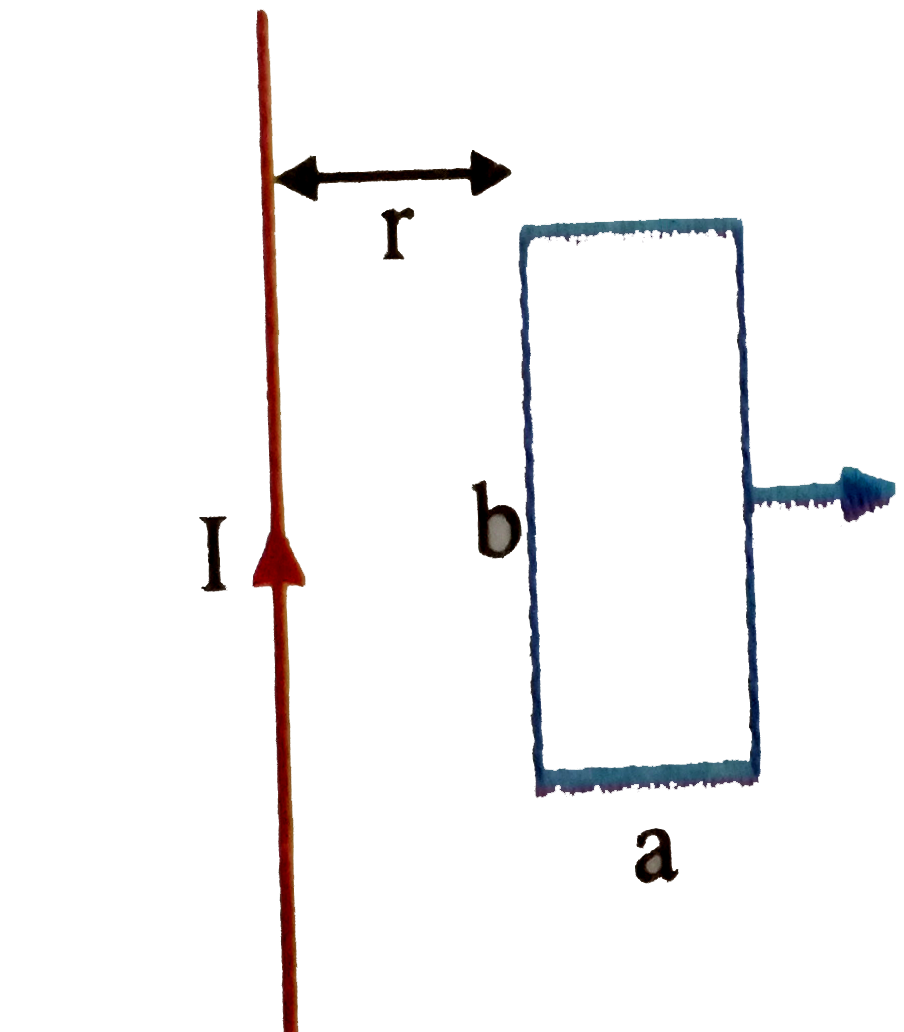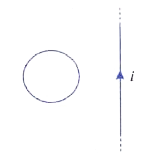Figures 1 to 3 show the working of a simple A.C. generator. Study the diagrams and answers of the following questions.i State and explain the principle underlying the working of a simple generator. ii Where is the loop of wire placed? iii What happens when the loop is rotated? iv Indicate the direction of the current flow through the wire for the first half of the turn Figure 1. Name and state the rule used in finding the direction of the current. v Indicate the direction of the current for the case shown in figure 2. vi Indicate the direction of current in the outer circuit i.e. electric bulb in figure 1 and in figure 3. vii What type of current is shown in the above diagrams? Explain.
i The generator works on the principle of Electromagnetic Induction. Whenever the flux passing through a closed circuit changes e.m.f. is induced in it and a current begins to flow. Its direction is given by Fleming’s Right Hand Rule or Lenz Law. As long as the loop is moving within the magnetic field an electric current will flow. ii The loop of wire is placed between the two poles of a ‘U’-shaped magnet. iii When the loop of wire is rotated between the two poles of a ‘U’-shaped magnet an electric current flows through the wire. iv As rotation of the coil is the clockwise direction and the direction of magnetic field is from right to left the current will flow in the anticlockwise direction i.e. from B2 and B1. The law used is Lenz’s law. Lenz’s law: “The direction of the induced e.m.f. is such that it opposes the change responsible for its production.” v No electric current flows when the loop of wire is halfway through the turn i.e. at an angle of 90° [as sin 90° = 0.] vi Figure 1: From brush B2 to B1 Figure 3: From brush B1 to B2 vii The type of current shown is an alternating current or A.C. current. When the loop of wire makes the second half of the turn fig. the direction of the electric current through the bulb is reversed and it flows back in the opposite direction.
Related Solutions
Describe briefly, with the help of a labelled diagram, the basic elements of an a.c generator. State its underlying principle. Show diagrammatically how an alternating emf is generated by a loop of wire rotating in a magnetic field. Write the expression for the instantaneous value of the emf induced in the rotating loop.
View SolutionDescribe briefly, with the help of a labell diagram, the basic elements of an A.C. generator. State its underlying principle. Show diagrammatically how an alternating emf is generated by a loop of wire rotating in a magnetic field. Write the expression for the instantaneous value of emf induced in the rotating loop.
View SolutionState the working principle of A.C. generator.
View SolutionDraw a neat labelled diagram of an ac generator or dynamo.
View Solution(a) Draw a schematic diagram of an AC generator. Explain is working and obtain the expression for the instantaneous value of the emf in terms of the magnetic field B, number of turns N of the coil of area A rotating with angular frequency . Show how an alternating emf is generated by loop of wire rotating in a magnetic field.
(b) A circular coil of radius 10 cm and 20 turns is rotated about its vertical diameter with angular speed of 50 rad in a uniform horizontal magnetic field of .
(i) Calculate the maximum and average emf induced in the coil.
(ii) If the coil forms a closed loop of resistance , calculate the maximum current in the coil and the average power loss due to Joule heating.View SolutionExplain the underlying principle and working of direct current generator (or DC dynamo) by drawing a labelled diagram.
View SolutionExplain the underlying principle and working of direct current generator (or DC dynamo) by drawing a labelled diagram.
View SolutionExplain the underlying, principle, working and uses of an electric generator with a labelled diagram.
View Solutionएक आयताकार चालक लूप में धारा प्रवाहित होती है, यह एक लंबे सीधे तार के समीप स्थित है जिसमें एक स्थायी धारा प्रवाहित हो रही है। तार, लूप की भुजाओं में से एक के समांतर है और इसे लूप के समान तल में रखा गया है जैसा कि चित्र में दर्शाया गया है। तब, लूप
View SolutionDraw a labelled diagram of an a.c. generator . State its principle and explain its working
View SolutionState and explain the principle of A.C. generator.
View SolutionA rectangular loop of wire with dimensions shown in figure is coplanar with a long wire carrying current . The distance between the wire and the left side of the loop is . The loop is pulled to the right as indicated. What are the directions of the induced current in the loop and the magnetic forces on the left and right sides of the loop when the loop is pulled ?
 View Solution
View SolutionA loop and an infinite wire are placed side by side as shown in the figure. If the current I in the wire is increased then the induced current in the loop is
 View Solution
View SolutionDraw a shematric sketch of an a.c. generator describing its basic elements. State briefly its working principle. Show a plot of variation of alternating e.m.f. Versus time generated by a lopp of wire rotating in a magnetic field.
View SolutionShow the direction of loop current flowing through the loop.
View SolutionA rectangular loop is placed adjacent toa current carrying straight wire as shown in Figure. If the loop is rotated about an axis passing through one of its sides find the direction of induced current in the loop.
View SolutionA rectangular loop is placed adjacent toa current carrying straight wire as shown in Figure. If the loop is rotated about an axis passing through one of its sides find the direction of induced current in the loop.
View SolutionState the principle of working of a Generator.
View SolutionThe figure shows an infinitely long current wire out of the plane of the paper ( shown as a dot ). A current carrying loop ABCD is placed as shown in figure. The loop
 View Solution
View SolutionA rectangular loop of wire with dimensions shown in figure is coplanar with a long wier carrying current 'I' . The distance between the wire and the left side of the loop is r . The loop is pulled to the right as indicated. What are the directions of the induced current in the loop and the magnetic forces on the left and right sides of the loop when the loop is pulled ?
View Solution
